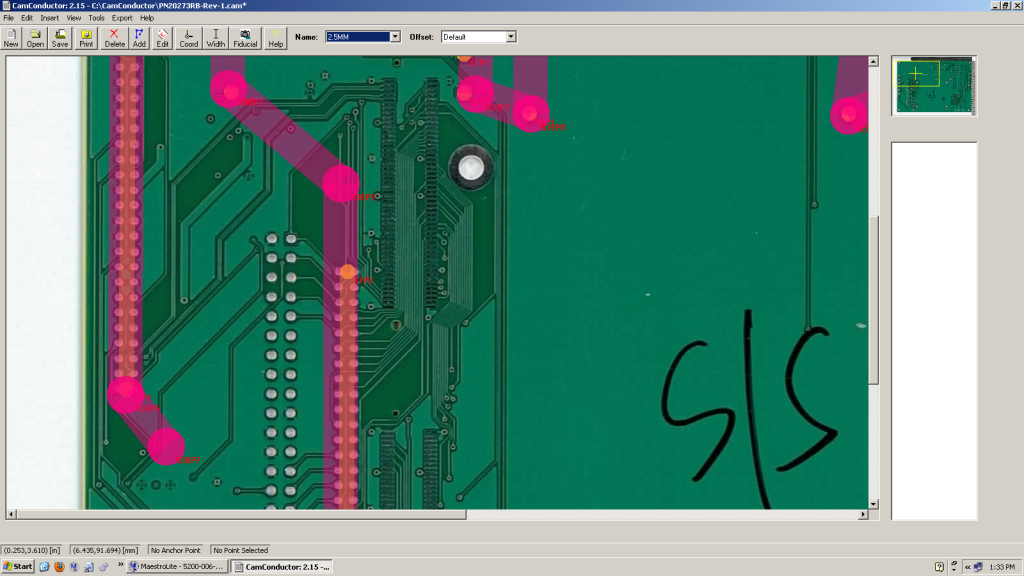This is just one article in a series of articles discussing tips and tricks for using a selective soldering machine. Here at Worthington Assembly Inc. we have a selective soldering machine manufactured by RPS Automation. Our particular model is a 2010 Rhythm model. These article are written by the same person who's used this machine every day for over a year. When soldering a double row header, or similar part, the solder can easily bridge at the end where the solder nozzle comes off. I don't know the technical term for this but I call it the drag off. There are multiple arguments for the way you can drag off the end of the double row header. The most common recommendation is to drag off at a 45 degree angle.
I don't necessarily agree with this. I found greater success dragging off parallel with the double row (in other words, straight). The key here is the speed you drag off at. The slower the better. (You can go too slow though, so be careful. If you go too slow you'll melt the header you're soldering.) More importantly, you need to use that same speed across the entire header. The trouble is, when the nozzle changes speeds or angles, it stutters. Not much though. It's almost imperceptible but if you look closely you'll see it. I don't know that this is necessarily what causes the bridging but I suspect it is. So what we do more often than not is to drag straight off the double row headers at 0.200" per second.
Now after explaining all of that, I must point this out. Sometimes it is still necessary to drag off at a 45 degree angle. Take a look at the above picture. You'll see 2 double row headers. The one on the left we drag off at a 45 degree angle. The one on the right we drag off straight.
You'll notice that on the double row header where we drag off at a 45 degree angle, the pivot point is right at the last 2 pins, while still barely touching the previous 2 pins. What's happening here, as best I can understand, is that we change all of the surface tension of the solder wave. We now have 4 pins all tugging at the solder as it's dragging off. This causes the solder to want to adhere just to the pins and not to fall back onto itself. That having been said, I've still had better success dragging off at a straight angle, without "stutter stepping" on the last four pins.
To sum up, try dragging off at a straight angle, making sure to go nice and slow over the whole double row header. We find 0.200" per second works best. If you get inconsistent results with that technique try dragging off at a 45 degree angle, making sure your pivot point is adhering to the last 4 pins to use them as tension against the solder bridging itself.
As always, if you have any questions, feel free to give me a call or send me an email.

